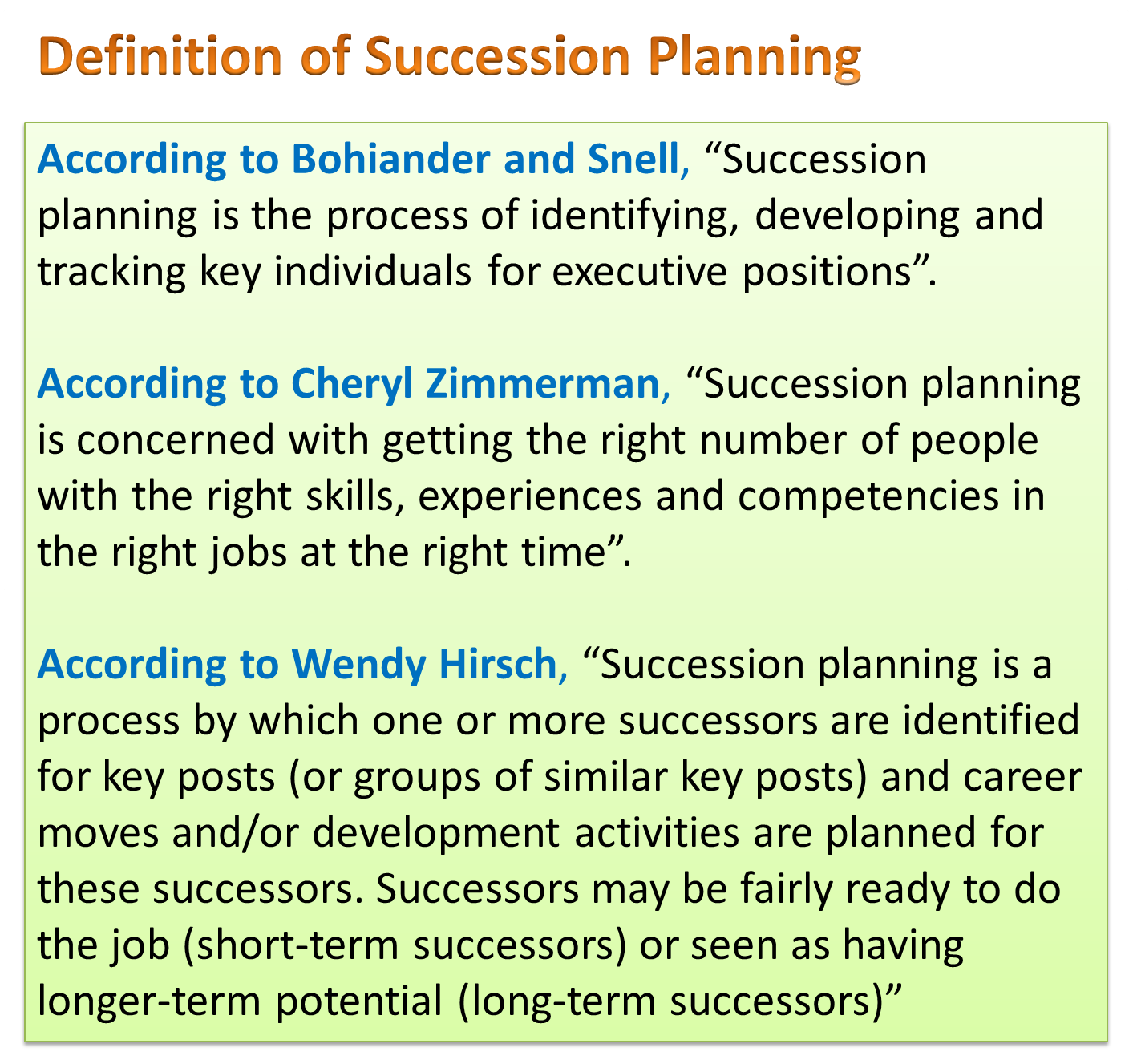Succession planning is the process of filling future vacancies in the organization. It is a continuation of leadership which includes identifying the candidates best suited for the post of future leaders and preparing them for the responsibilities of that post. The main purpose of this planning is to select suitable person for filling the vacant position at appropriate time. Various aspects are considered while succession planning process such as reassessment of organizational policies, analysing the existing human resources, estimating future changes and motivating the employees to prepare themselves to replace the leaders, who are about to retire or leave the organization.

Characteristics of Succession Planning
The following are the characteristics of succession planning:
1) Maintains Equilibrium between Individual and Organizational Needs: Succession planning gives equal importance to the organization as well as individual requirements. Individuals working in any organization need to maintain the balance between their career and family. Thus, this method helps the employees to take a career decision by which they can easily fulfil the necessities of their family members, and also work according to the changing requirements of the company.
2) Increases Experience by Lateral Movement: Earlier, organizations were more hierarchical, having more management levels. Employees had chances of promotions alongwith heavy increments in salary as well as status, but today the organizations are absolutely opposite. In organizations, only job rotation takes place at the same level without any cash benefit. In such situation, succession planning plays a critical role, as it fulfils the expectation of the employees of moving to higher positions with increased status and wealth. It also assures the employees to secure their career and use best career opportunities.
3) Focused on Roles, Not Jobs: Succession planning creates both job opportunities and role opportunities. Previously, people were only promoted to become specialists, but now the main hunt is for those employees who can perform different roles with high potential. Thus, there is a need to cluster jobs by role, level, and function in order to identify the most capable and adjustable candidates who can play these roles efficiently. Since job is a combination of roles, tasks and rank, it develops the skills of the employees to perform any role. Besides focussing on short-period substitution, this planning also prepares the employees to stay with the organization for a long duration of time
4) Competencies: In order to evaluate the potentiality of an employee, several organizations have started developing competency-based frameworks, which help in assessing the technical as well as general competencies of the employees. Integration of succession plans with these competency-based frameworks can prove to be very useful for the organization as it determines the appropriateness of the behaviour and the skills possessed by the employee for the higher roles.
5) Associated with Business Planning: In succession planning, managers are considered as shapers of organization’s future and HR is considered as facilitators which shows a close relationship among them. Succession planning and business planning go hand in hand. Thus, while implementing succession planning main emphasis should be given on various aspects related to the organizational plans such as healthy future building of the organization, changes that may occur, effect of those changes on the organization as well as on the employees and skills required to handle such changes
Types of Succession Planning
Succession planning can be categorised in following ways:
1) Role-Based: Role-based succession planning deals with those positions of the organization that are very important for its success. It prepares the present employees to replace the positions of middle-level managers and upper-level managers. For example, if the management is searching for a suitable candidate for the post of CEO, it will first assess the performance of the managers working directly under the CEO and then move on to other managers. Thus, by following this path they are able to get the most suitable candidate having the qualities required for that particular position. Organizations can also opt for training programmes if needed.
2) Individual-Based: This succession planning is based on the potentialities of an individual. An employee who is having great knowledge and high potential is trained by the experts of the organization to enhance their skills and make them fit for upcoming opportunities. In order to increase his experience, he is also given various tasks to perform, so that he can use his skills. By this, organizations can easily retain their talented employees.
3) Pool-Based: Unlike individual-based succession planning, this method does not focus on the capabilities of an individual, but on the potentialities of the group of individuals, so that several positions can be filled simultaneously. Pool-based planning can be classified into two broad categories – internal pool planning and external pool planning.
